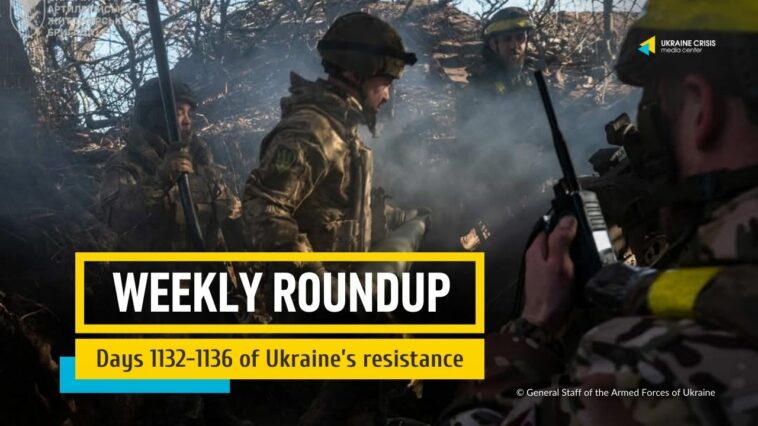This week, fighting has raged all along the front lines. Russia continued to strike Ukraine’s civilian infrastructure facilities far behind the front lines. Drone attacks targeted Kharkiv for several nights in a row. Russia dropped almost 50 glide bombs on Sumy region in one day alone. Some of the attacks were directed at energy facilities, as was the case in Kherson.
Ukraine continues defensive efforts. Russia occupied 133 square kilometers of Ukraine’s territory in March, six times less land than in November 2024, DeepState, a Ukrainian OSINT project said. Late last month, Ukraine destroyed a record 122 Russian artillery pieces in one day, half of what the British army has in total, Forbes counted up.
The Trump administration’s illusions of a quick ceasefire are fading. In a phone call with NBC News on Sunday, Trump said he was “very angry” and “pissed off” when Putin criticized the credibility of Zelenskyi’s leadership. Pastor Mark Burns, one of Trump’s top advisers, visited Ukraine on Monday as the country was marking the third anniversary of the liberation of Bucha. Trump officials have discussed the likelihood that the U.S. will be unable to secure a Ukraine peace deal in the next few months, according to Reuters. U.S. Secretary of State Marco Rubio told NATO allies on Thursday that Washington remained committed to the alliance. He said the U.S. expected the allied nations to spend 5 per cent of their GDP on defense.
Ukraine will never recognize occupied territory as Russian and will not accept any limits on the might of its army, Ukrainian Foreign Minister Andriy Sybiha said Tuesday during a meeting with his Lithuanian counterpart, Kęstutis Budrys. Trump on Wednesday announced the U.S. will impose a minimum baseline of 10 per cent tariffs on goods imported from all foreign countries, as well as higher, “reciprocal” tariffs on nations that have their own tariffs placed on the U.S. The latest round of tariffs does not include Russia.
Seventy-three per cent of Ukrainians say Trump’s presidency is bad for their country, a recent survey by the Kyiv International Institute of Sociology found.
Politico: Trump’s tariffs threaten U.S. weapons production. The Trump administration’s move to impose tariffs on all imports could drive up military production costs and complicate defense cooperation with other nations, Politico stated on Thursday. The paragraphs below are quoted from the article.
His program, if implemented as planned, could muddle global supply chains the Pentagon has spent decades creating, make American weapons more expensive, and complicate international efforts to counter China — such as joint ventures to build submarines with the United Kingdom and Australia.
America’s go-it-alone approach, coupled with these wider threats, may lead skeptical partners to look elsewhere for collaboration, according to a dozen diplomats, lawmakers, officials and defense industry analysts. And it will chip away at an industry that equips much of the world — shredding trust and predictability from a global defense relationship that has long benefited Washington and its allies.




